As part of our series on cotton in community, we are honored to share this article produced by Harpreet Singh, exploring the connections between cotton, colonialism, cloth production, and community-based economies. As Harpreet writes, tula is a Sanskrit word that means cotton and also means balance or equilibrium. The vision and approach of this work — in the historical land base where cotton was first spun and woven — is a practical and inspiring model for local economies in the Fibershed community.
Written and photographed by Harpreet Singh

“The healing of the land and the purification of the human spirit is the same process.” -Masanobu Fukuoka.
“This was dyed using manjistha,” he explained, pointing to a spool of resplendent red cotton hanging outside between tall coconut trees. My interest was piqued; I was familiar with the herb manjistha (Indian red madder) as a renowned blood purifier in India’s Ayurvedic medicine tradition. I’d been searching for fabric dyed with beneficial plants rather than the endocrine-disrupting chemicals in most contemporary clothing. “No chemicals are used in the process. We do it all on our farm.” Nearby, beautiful blue, black, and yellow spools of cotton were drying, all dyed using natural herbs and plants. The rhythmic hum of hand-weaving illuminated the background.
I was speaking with Santosh Koulagi at his natural farm in the picturesque village of Melkote in South India. A decade-long journey in understanding “sustainability” had led me to that moment — a journey where I had become increasingly aware of the ecologically resource-intensive (and often petrochemical-filled) approaches used in most “sustainable” goods available to me in the U.S. I’d come to India to study my ancestral sustainable practices.

The day I spent with the Koulagi family transformed my understanding of the possibility to live truly sustainably and regeneratively. Our discussions covered topics that Koulagi believes are intricately intertwined: natural farming, Mahatma Gandhi’s teachings, and a movement in organic indigenous cotton called Tula that is a non-profit run “by friends.” The last point, in particular, captured my attention. A movement, run by friends, producing naturally-dyed handmade organic textiles, that wasn’t a capitalist enterprise? I’d never come across anything like it.
Throughout my time in India, I was able to meet many of the individuals and organizations involved with Tula. They are part of a dynamic movement that is returning to indigenous methods of agriculture, food, textiles, healing, and lifestyle. With this lens, there is no separation between how we treat our land, what we eat, what we wear, and our health. All are intricately connected.
This is their story.
The Beginnings of Tula: The Interlinkage between Regenerative Food and Regenerative Textiles
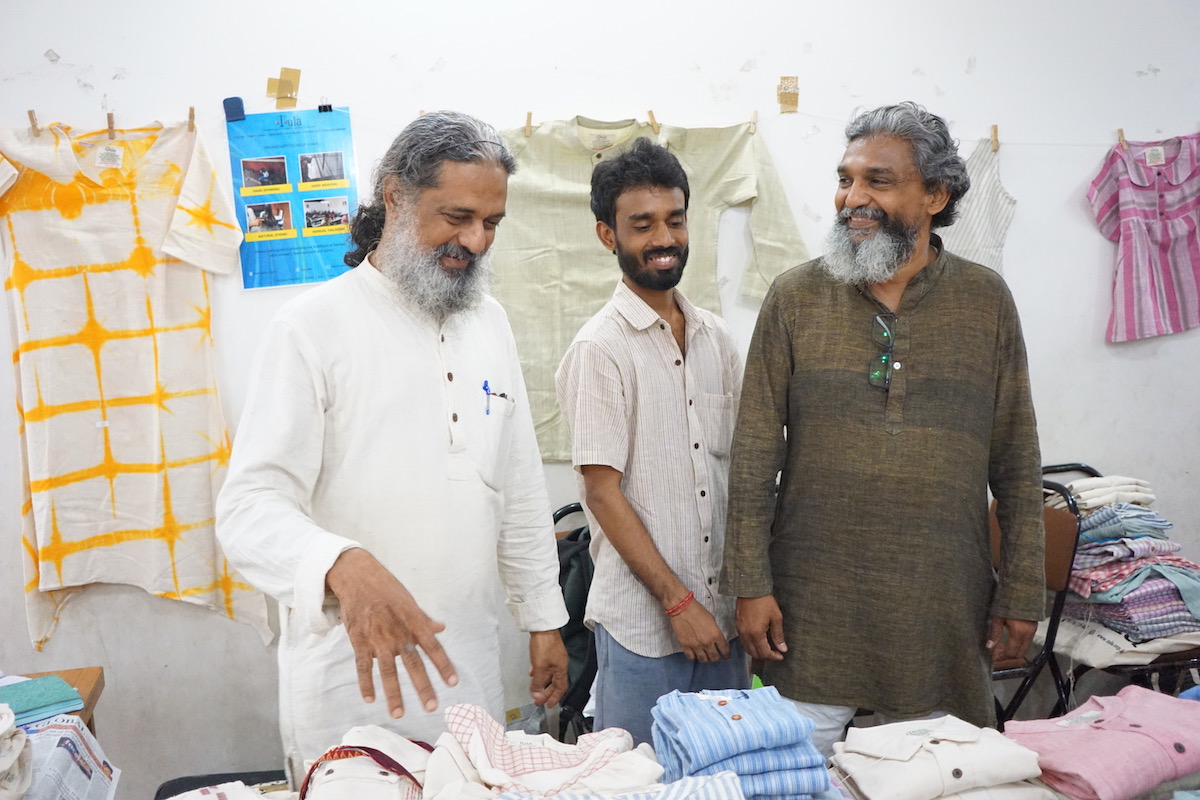
Tula’s roots emerged out of a revival of organic farming of indigenous foods. The movement began in 2007 in Chennai when a group of friends gathered to discuss how they could help address the crisis of farmer suicides that are ravaging India.
The first project that emerged was in the organic, sustainable food space, where they created the successful nonprofit, volunteer-run organic store in Chennai, reStore. reStore works closely with farmers and consumers to increase both the demand and supply of local, organic produce grown using traditional and sustainable agricultural methods. reStore then led to another, more community-driven approach, the Organic Farmers Market (OFM). OFM built a strong footprint throughout Chennai: twice a week, families in 18 neighborhoods open a room of their house to their neighbors to pick up freshly delivered organic produce from local farmers.
Both reStore and OFM take a unique approach, one that enabled the Tula team to ultimately revive all steps of the sustainable agriculture supply chain. They work extremely closely with small-scale, marginal farmers to adopt traditional South Asian farming methods without pesticides and insecticides. They promote indigenous grains (including millets and red rice), which had lost popularity in India after the problematic Green Revolution practices were put into effect. They are nonprofits who have education and awareness as a cornerstone activity, not commerce. They don’t require organic certification — which is expensive and would preclude the involvement of small-scale farmers — because, as one of Tula’s founders, Ananthoo, says, “When you have direct relationships and build trust, certification isn’t necessary.”
In 2013, the same group of friends regrouped. Their work in food had been a phenomenal success. But they questioned whether they had made a dent in the suicides that were still causing much duress to India’s farming communities.
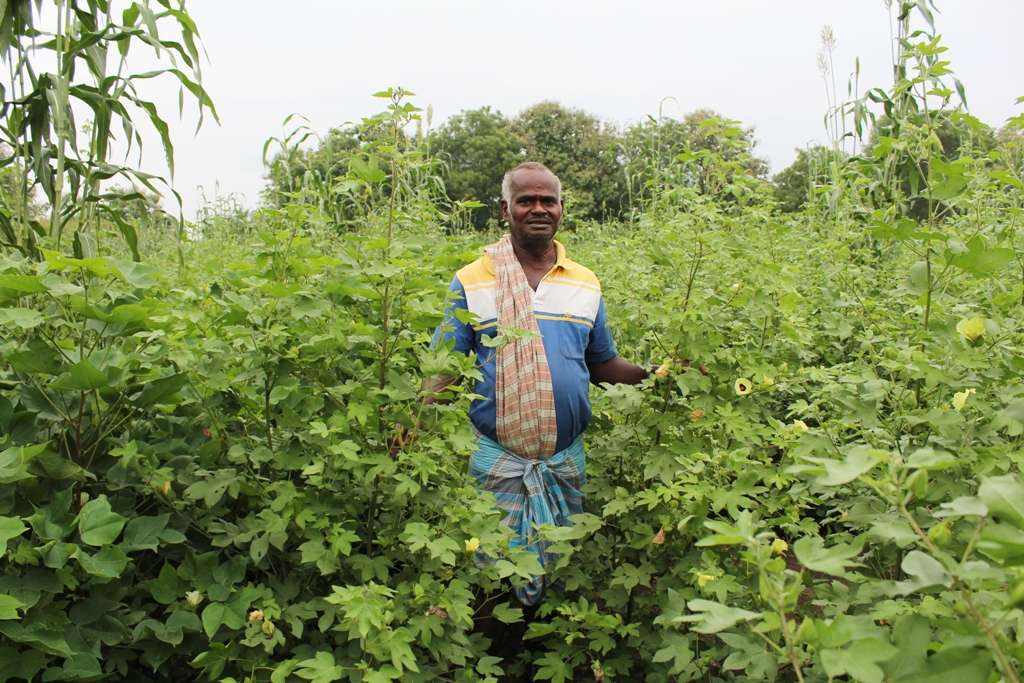
They learned that the majority of farmer suicides occur in India’s cotton belts, with the suicides oft occurring by farmers drinking the very pesticides they use on their cotton fields. Genetically modified cotton — introduced into India by Monsanto as “BT Cotton” in 2002 — within one decade became ~95% of India’s cotton production and requires farmers to buy expensive seeds every year, rather than saving and owning their seeds themselves as in our native farming methods. It also requires the purchase of costly pesticides and insecticides. Research has shown that farmers’ costs have increased significantly, while the prices they obtain for their cotton have decreased.[i] One agricultural company has a near-monopoly on the cotton seeds grown in India. Anecdotal evidence from farmers indicates that pests have become stronger, requiring farmers to purchase more pesticides for their BT cotton crops. A sizable number of farmers are affected: India grows 21% of the world’s cotton crop, second only to China’s 29%.
The team decided that to make an impact on reducing farmer suicides, they needed to dive into the world of cotton, a world that in India is particularly meaningful.
South Asia is the first place where cotton was spun and woven into thread. As Harvard historian Sven Beckert writes, “from the earliest time until well into the nineteenth century — that is, for several millennia — the people of the Indian subcontinent were the world’s leading cotton manufacturers.”[ii] For Mahatma Gandhi, khadi cotton — handspun and handwoven cotton cloth — was the symbol for the Indian independence movement from British colonialism. It represented the hope that India could again experience swaraj (self-reliance) after centuries of control by foreign colonial powers.
How did the lauded home of cotton production become a place where, more than 60 years after independence, cotton farmers were committing suicide? What could they do to help?
The Tula Approach: Transform the Entire Cotton Value Chain
To answer these questions, the team explored each and every step of the cotton value chain to see how they could improve rural livelihoods and reduce ecological harm. They named their effort Tula, a Sanskrit word with a dual meaning that reflects how cotton had been viewed for centuries: it means cotton and also means balance or equilibrium. Their goal was to restore a sustainable equilibrium all throughout the cotton value chain, from soil to garment. They knew the previously existing equilibrium had been, with much forethought and planning, destroyed by British imperialism. Beckert’s book The Empire of Cotton explores how the history of the global cotton market is the story of the making of modern-day capitalism, and as he writes (emphasis my own):
“The global South was to be a market for metropolitan industry, not a competitor, and a supplier of raw materials and labor, and both required the destruction of indigenous manufacturing. Colonial governments created systems of tariffs and excise duties that discriminated against indigenous producers.”[iii]
Harry Rivett-Carnac, the British cotton commissioner for Berar district in central India, candidly described his plan in 1869:
“Now it is not too much to hope that … European piece goods might be imported so as to undersell the native cloth. And the effect would be, that, not only would a larger supply of the raw material be obtained — for what is now worked up into yarn would be exported — but the large population now employed in spinning and weaving would be made available for agricultural labour, and thus the jungle land might be broken up and the cultivation extended.”[iv]
South Asia’s biodiverse forests had indeed been “broken up” in the 1800s to serve as large-scale, mono-crop, commercialized farms for the British imperialists. Spinners and weavers were forced to leave their valuable and respected careers and become agricultural labor for the British empire.
Gandhi and South Asian independence activists hoped that revitalizing the Indian subcontinent’s indigenous cotton methods was a path towards restoring rural livelihoods and swaraj (self-reliance) and ending the exploitation that had violently disrupted the colonies.
Ananthoo and the Tula team feel the same way today.
Growing Cotton: A Return to Sustainable, Indigenous Farming Methods
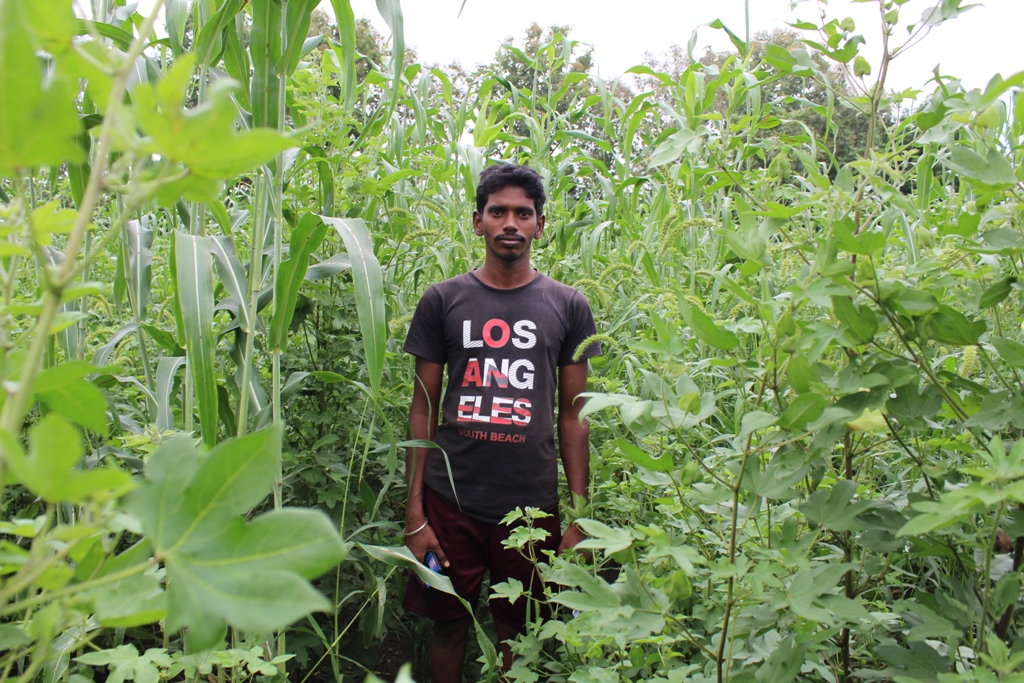
The Tula experiment began by asking 15 dryland organic farmers in Tamil Nadu, from whom reStore purchased millets, to grow cotton. The farmers were given seeds of the dominant cotton species today: hirsutum, the cotton preferred by the British due to its long-staple fibers that could be easily used in industrial spinning machines and power looms.[v] Hirsutum, also known as American upland, is native to the Americas and spread by British imperialists throughout the colonies. It is now >90% of the world’s cotton crop.[vi]
Several people implored that the Tula team revive the indigenous strains of cotton on the subcontinent, the species arboreum, and herbaceum (both are colloquially referred to as desi cotton, meaning local cotton[vii]). Cotton is remarkable due to its morphological plasticity, which enables it to adapt to local climates and geographies.[viii] Traditionally, villagers in present-day India, Pakistan, and Bangladesh grew desi cotton as a secondary crop alongside their primary food crops, maintaining their biodiversity and food security. The mono-crop cotton farms we view as normal parts of rural landscapes today are a relatively new phenomenon started by the colonists. As Beckert writes, “no significant cotton monoculture emerged before the eighteenth century,” when British imperialists created the aforementioned large mono-crop cotton farms to supply the thirsty Lancaster cotton mills.[ix]
The return to indigenous species of cotton is crucial. Arboreum and herbaceum are short-staple cottons that had over thousands of years, adapted to local microclimates in South Asia. They are, therefore, naturally very resistant to local pests and insects. The seeds are saved for next year’s crop, increasing farmers’ agency and financial independence. Local native varieties can grow without watering or irrigation. They thrive with only rainwater as their water source, a crucial consideration because one of the most frequent — but inaccurate — criticisms about cotton is that it requires extensive water resources. Water requirements are significantly reduced when we return to local, native species of cotton, which allow for rainfed farming.
Over the last 5 years, the Tula team has worked with local communities in the states of Tamil Nadu, Karnataka, and Maharashtra to identify the particular strains of cotton unique to each locality. Indigenous seeds are hard to find. At times Ananthoo has met rural elderly farmers who had old seeds saved by ancestors; in other instances, he and the Tula team found seeds stored in local agricultural universities for research purposes. Seed saving is no small task when there are very few indigenous seeds to start with: it’s taken several years to grow enough cotton to save enough seeds to distribute to enough farmers to be able to impact the number of livelihoods to which Tula aspires.

Tula’s partner farmers grow this cotton using traditional soil management techniques that restore and maintain soil fertility. They use homemade traditional fertilizers such as panchagavya and jeevamrit, which have been used for centuries in the Indian subcontinent.[x] Panchagavya and jeevamrit are easily made by fermenting readily available ingredients, including cow dung (from native South Asian cow breeds), jaggery (unprocessed, unrefined traditional sugar), and in some recipes, neem and other local leaves. Panchagavya is used as both soil fertilizer and, when sprayed on plant foliage, pest repellent. Mulching is also a critical practice. In tropical climates, mulch provides added soil nutrition and retains soil moisture.
Desi cotton grows in a 7-8 month cycle, and farmers grow 8-9 other three-month crops in their fields alongside cotton, in the mixed crop methods used before British imperialism. The companion crops planted alongside desi cotton vary by geography: in Karnataka, cotton is grown alongside chili peppers; in Tamil Nadu, it is grown alongside corn, millet, coriander, and vegetables including onions, okra, tomato, and chili peppers; and in Maharashtra, it is grown alongside pulses (chickpea, pigeon pea, millets), flax[xi], and vegetables (including okra, tomato). Once the farmers harvest the companion crops, they cut the stalks and lay them in the fields as mulch.
Tula farmers have seen dramatically improved livelihoods. They now have diversified their income sources. The majority of their income now comes from the lucrative food crops they grow alongside the cotton. Tula pays a premium over the market price of BT cotton — 50% more — to ensure that growing cotton is a financially viable activity for the farmers. Tula now purchases 200 quintals of cotton annually from 80-100 small-holding farmers, who own, on average, less than one acre each.
Revival of Khadi: Handspun, Handwoven Cotton
The Tula team next turned to understanding the spinning and weaving steps of the cotton value chain. They visited industrial spinning mills and power loom factories and were aghast at the high levels of water and energy required. The team was shocked and appalled to see first-hand how unjust and environmentally wasteful conventional cotton textile manufacturing methods are. They visited communities throughout India where khadi is still made and found a significant decline in hand spinning and handweaving. The weavers and spinners they met consistently told them, “We aren’t getting enough pay to support ourselves and our families. We are the last of our people to do this. Our children will not do this work.”
“We said, let’s revive our khadi traditions. Let’s bring local livelihoods back,” Ananthoo explains.
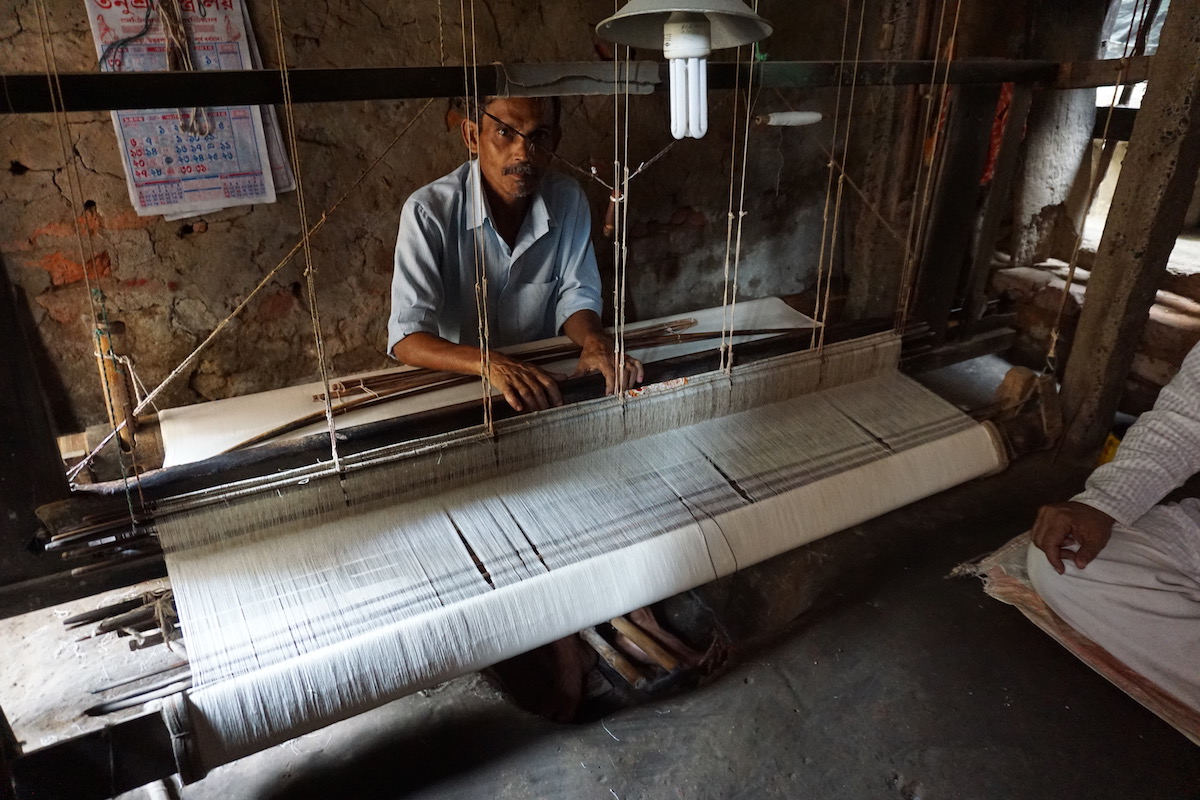
Khadi was the symbol of the independence movement from British colonialism. Mahatma Gandhi felt that khadi “connotes the beginning of economic freedom and equality of all in the country … Khadi to me is the symbol of unity of Indian humanity.”[xii] He viewed it as the non-violent alternative to the exploitative British imperial supply chain. He wanted everyone to learn how to spin their own cotton using the traditional charkha (spinning wheel).
Khadi is more than an activist concept for us in South Asia. As someone who learned how to sew when I was a teenager, I often heard my elders talk about khadi’s versatility, qualities that were known for generations. My grandmother loves to say that “khadi is the best fabric to wear: it is cooler in the summer and warmer in the winter than factory milled cloth.” I’ve found this to be uncannily true, even across the varied climates of America and India. Khadi was also part of life. My other grandmother tells stories about her childhood summers in her ancestral village in Punjab, where she’d play outside while her grandmother would hand spin cotton that was grown on their fields. Their homespun cotton yarn would be taken to a weaving family in their village who would make blankets and mats.
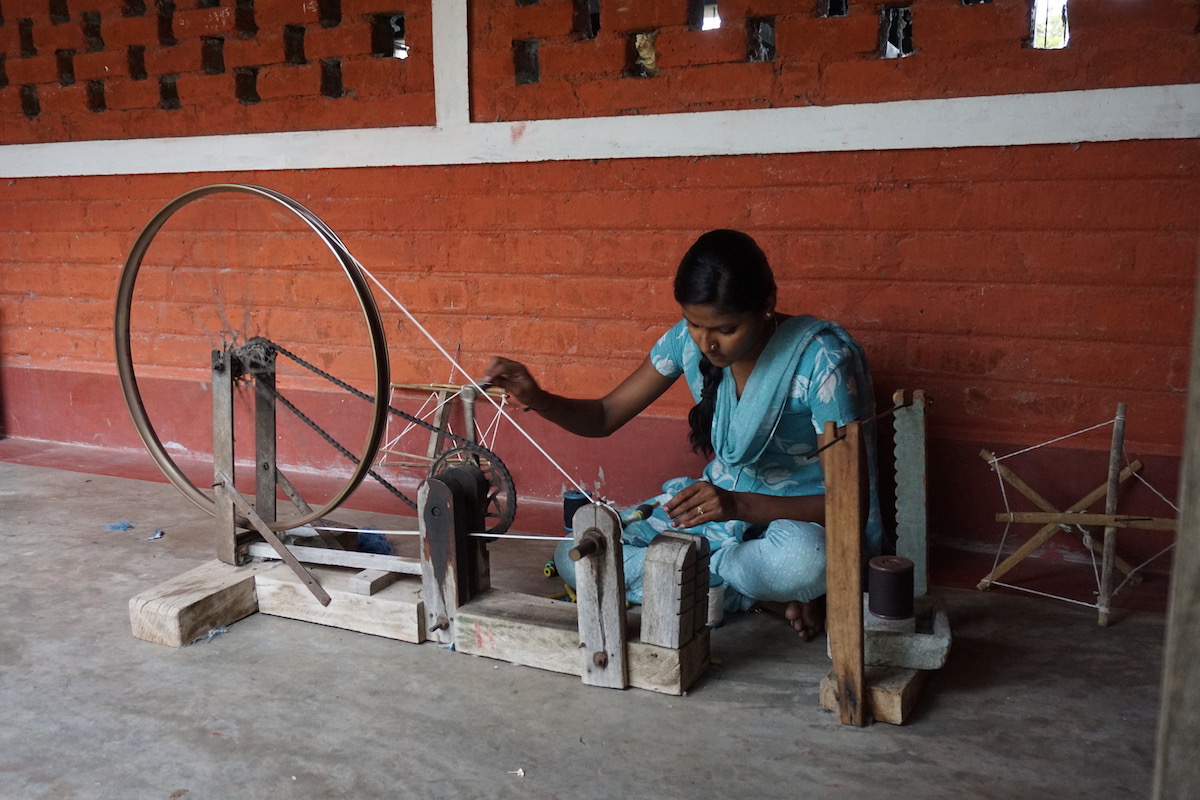
And yet, this tradition — whose delicate craftsmanship used to be the envy of the world — is at risk of its demise. Up until the 19th century, “the overwhelming bulk of raw cotton was spun and woven within a few miles from where it was grown.”[xiii] Weaving was a highly respected craft in South Asia; “in some parts of the subcontinent they found themselves in the upper reaches of social hierarchies, prosperous enough to be among the leading donors to local temples.”[xiv] Weavers retained their sense of agency: they owned their tools, controlled who they sold their products to, and set their prices. British imperialists found it quite challenging to insert themselves into India’s cotton supply chain and control cloth production, but recognized that in order to improve their margins and acquire enough cloth, “monopolizing the market became the way to drive down weavers’ incomes and drive up the selling price of particular goods.”[xv] They “increasingly resorted to violence, including corporal punishment” against weavers who dared sell their work to other merchants, which “produced their intended results: Indian weavers’ income fell, from one-third of the price of cloth in the late 17th century to only 6% in the late 18th century.[xvi]
Once mechanized looms became widespread in Britain, the British East India Company worked diligently to ensure that British machine-made cloth would dominate the Indian market. They created tariffs and excise duties that discriminated against Indian producers of cloth and were remarkably successful within three decades: the market share of British cloth in India went from 11.5% in 1850 to 60% by 1880.[xvii] Fifty percent of the weavers in India were forced to abandon their profession during the American Civil War and moved into agricultural labor for British needs.[xviii]
Large numbers of spinners died of famine.[xix]
Tula is committed to strengthening and reviving khadi institutions in India. Their thread is spun, and cloth is woven at several village-based khadi organizations in Karnataka, West Bengal, and Tamil Nadu. Tula selects organizations who pay their spinners and weavers a livable, dignified wage above the minimal government requirements and increases the wages paid for their intricate labor. Tula pays 110 rupees per meter for khadi fabric, compared to the paltry market rate of 15-20 rupees per meter which is inadequate for weavers and their families to make ends meet.
Tula also supports their partners to increase their businesses outside of Tula. Ananthoo says, “there is nothing called competition in our approach to khadi.”
I’ve had the opportunity to visit two of their khadi partners in West Bengal and Karnataka, the Mahatma Gandhi Gramodyog Seva Sanstha (MGGSS) and the Janapada Seva Trust. In rural West Bengal, the home of the world-famous Bengali tradition of intricate 2,500 count handmade muslin fabric that Marie Antoinette made famous with her resplendent gowns — fabric so masterfully handcrafted that an entire 6-yard sari can be pulled through a finger ring! — Tula is supporting 9th generation Bengali muslin weavers to improve their livelihoods and access more markets. MGGSS has added 20 more looms as a result of Tula demand. In Karnataka, Tula helped the Janapada Seva Trust grow to one additional village and provide more employment to local villagers. Santosh Koulagi is committed to having a humane khadi unit where working hours are capped (“we’re not a factory,” he emphatically says), yet spinners and weavers earn respectful livelihoods.
Returning to Natural Dyes
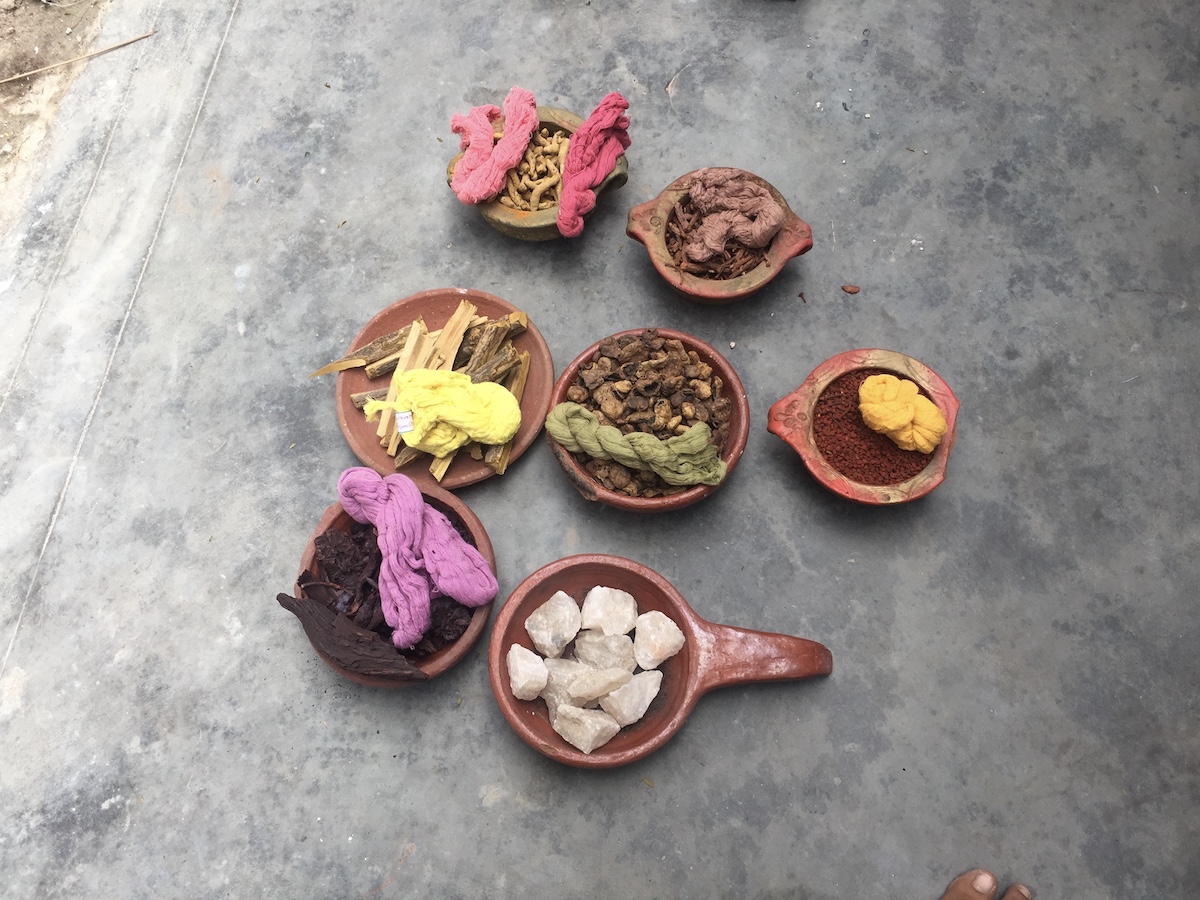
Ananthoo and the Tula team visited the global dyeing centers of Tirupur and Erode in Tamil Nadu, where much of the global industry’s dyeing of cloth occurs in India. They were horrified to see that the rivers and groundwater have been contaminated — “fully polluted!” — with chemical industrial waste from the dyeing industry, leading to health issues in the local population and low yields in local farms.[xx] When visiting Erode, one hears many stories about how dramatically the local ecology changed in the late 1990s after the start of large-scale industrial dyeing. “My friend’s coconut trees stopped producing coconuts! We had never seen that before. I became so concerned that I started looking into natural alternatives,” Shivaraj, the founder of one of Tula’s natural dyeing partners, Wrukshatone, explained to me.
Natural dyeing techniques use various parts of plants and earth to impart color onto thread: roots, flowers, leaves, bark, stems, and even different types of clay. India has many native approaches to dyeing used for thousands of years to create its world-famous cloth. The clothing was long considered beneficial to wear on the skin because of the medicinal qualities of the plants used for color. Much of this knowledge, and some of the plants, has disappeared because the conventional fashion industry views natural dyeing as difficult to support and scale; the variation in color in each naturally occurring plant specimen leads to different consistencies in color.
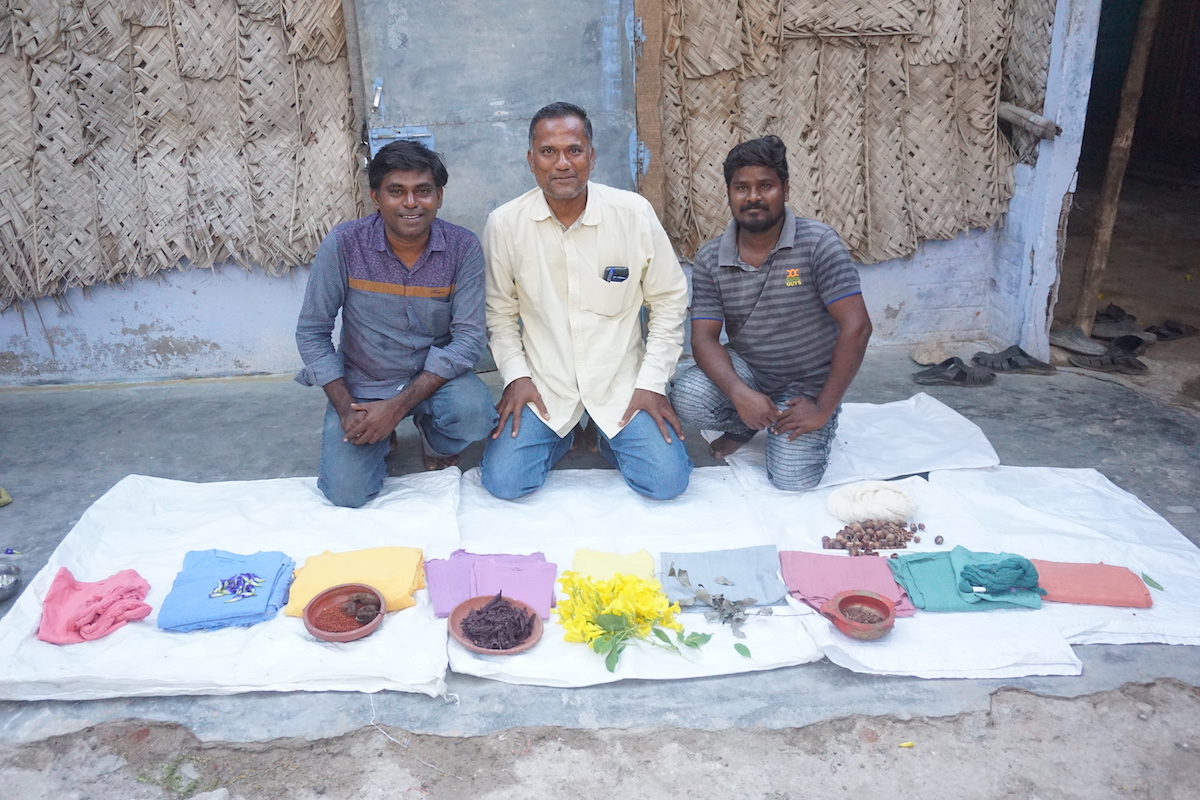
Tula partners with several natural dyeing organizations in South India, two of whom I’ve had the privilege to visit and get to know — Wrukshatone in Erode, Tamil Nadu, and the aforementioned Janapada Seva Trust in Melkote, Karnataka. Their research, testing, and work has impressed me with its extensiveness. They are committed to ensuring that every input and output of their dyeing process is natural, compostable, and safe enough to be put onto agricultural farmland. Wrukshatone has a fully circular system where all of its dyeing process outputs — including water used for processing — are distributed onto local farmland to nurture soil fertility and help during time of droughts. The Janapada Seva Trust dyes all of the cotton thread on their 20-acre natural farm and therefore is committed to ensuring no harmful by-products are created by their natural dyeing process.
Regenerative Cotton Cloth is Possible
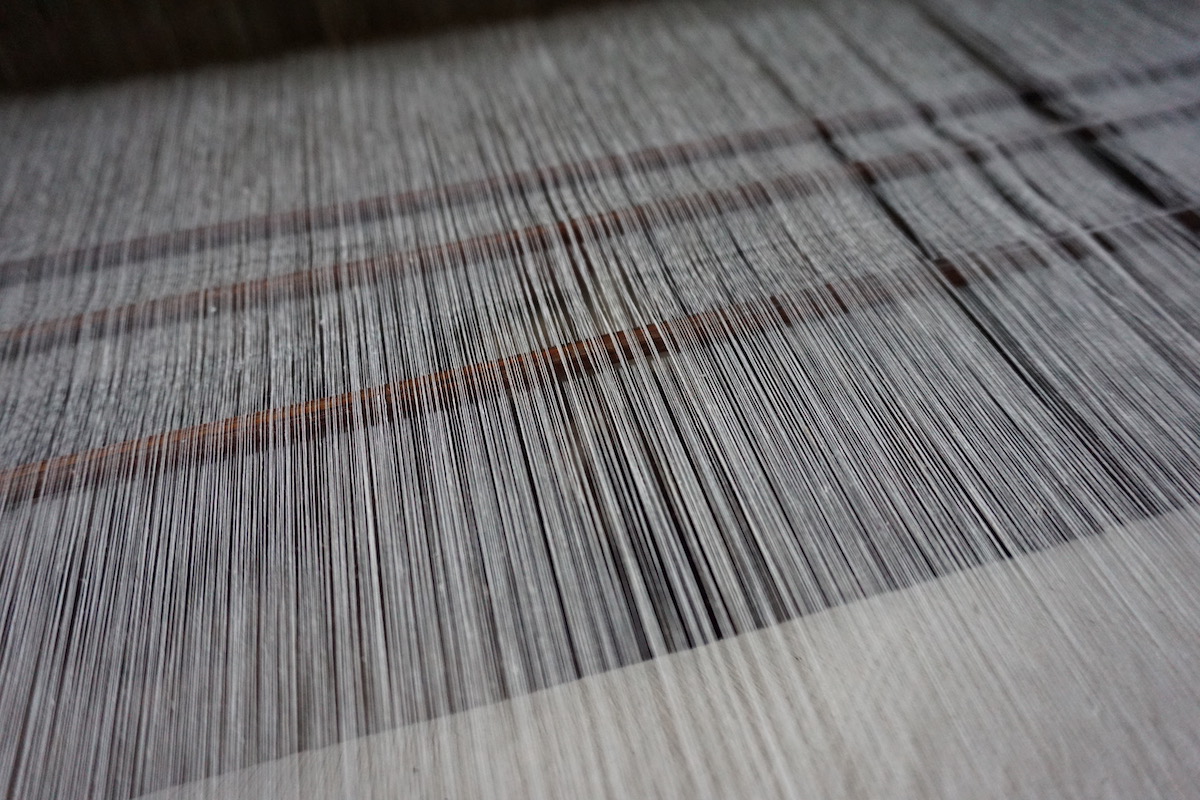
Five years in, Tula’s radical end-to-end, handmade, synthetic-chemical-free local cloth experiment has paid off, literally. They started with a small 15 lakh investment (~$21,000 USD) by 15 friends, who contributed 1 lakh each, and have not needed to take any additional funding. Eight of the investors have been paid back, with the remaining to be repaid once sales return to pre-Covid levels. With that initial small investment, they supported 100 livelihoods in the first year, growing to now 300 livelihoods as they’ve expanded the number of farmers, spinners, and weavers they work with. Tula is transparent and posts the wages paid to each step of the supply chain on their website.
Tula’s roots in education and awareness inspires their in-person sales strategy. They choose to only sell their clothing and fabric in venues where customers can talk to Tula volunteers and learn first-hand about how the cotton is grown, and fabric is handmade without chemicals or machines. Half of their sales occur in their retail store in Chennai, and the other half occur in traveling exhibitions across India. (Note that India’s lockdown during Covid-19 has hampered Tula’s sales, and they’re currently exploring online domestic-only e-commerce options during these pandemic times).
Tula’s growth has occurred domestically within India; Tula has a policy of not exporting their fabric or clothing, despite many requests, though their partners are willing to sell directly to international buyers.
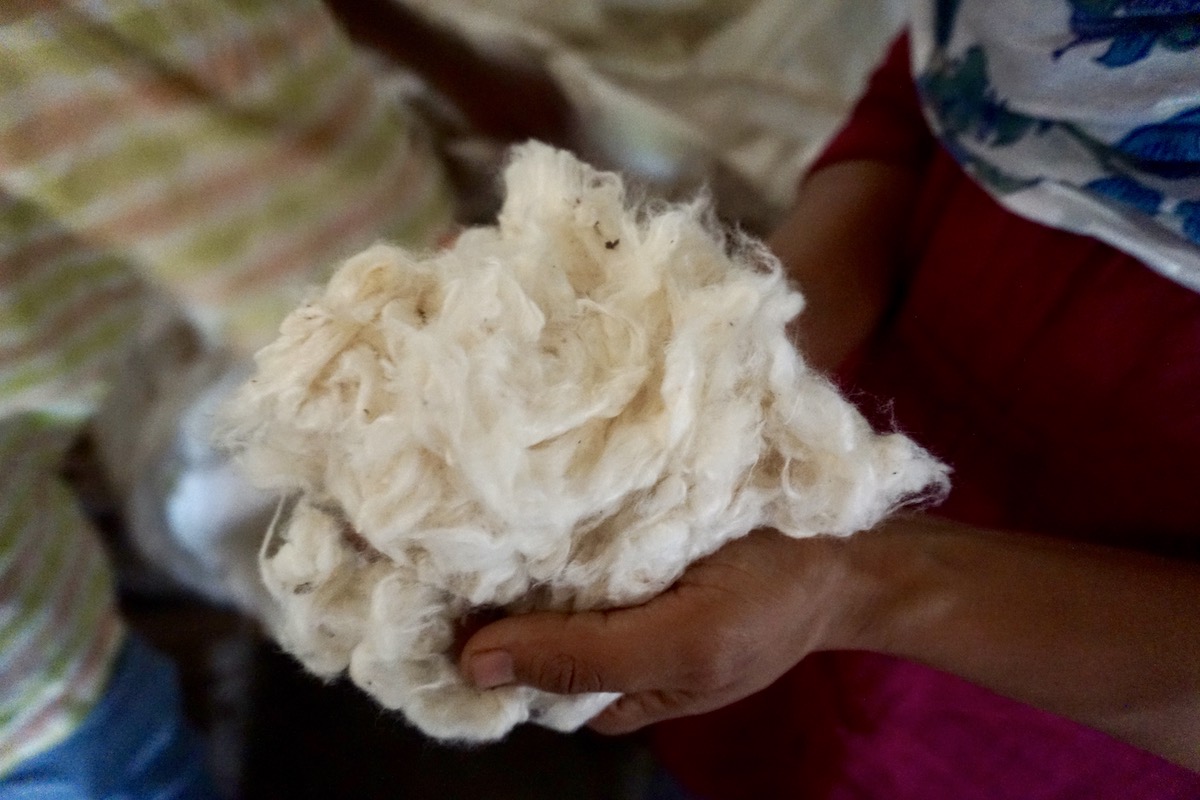
What is next for Tula? What challenges are they currently facing? I put these questions to Ananthoo, who cited three main focuses:
- Availability of indigenous seeds
“There are very few indigenous seeds left, and we aren’t seed breeders,” Ananthoo says, “I now have farmers coming to me almost daily, requesting indigenous seeds because they want to move from GMO cotton. I’m unable to meet the demand.” He gives seeds to farmers to cultivate specifically for the purpose of growing a grassroots seed bank of sorts; this past year, he has given seeds to 50 farmers and requests that they, in turn, give away twice as many seeds once they harvest, so the desi cotton movement can grow from farmer to farmer.
- Increasing the number of skilled spinners and weavers
Few people are interested in spinning and weaving, largely due to the low income provided and low respect given by society to spinners and weavers. Skillset levels are also low: both are intricate artisanal crafts and require experience and well-honed skills in order to produce quality cloth. “We need more youth to be interested to learn the craft and do this work,” Ananthoo says. It will take years of providing livable wages to rebuild the spinning and weaving capabilities and skillsets in rural India.
- “We need 500 more such local efforts”
Tula focuses on the market in specific parts of South India. “We made a conscious decision to not export, to make it more sustainable: our goal is that the textiles be locally produced, locally consumed, and should bolster the local economy,” Ananthoo describes. In fact, the Tula team desires for others to create local cotton approaches in other parts of India. Tula is mentoring a native cotton initiative that has recently started in North India, in the state of Punjab.
I expressed surprise that Tula did not want to scale across India — something we all take for granted in the contemporary business world. “Then there will be no difference between us and one of the large industrial firms,” Ananthoo replies. “We need to support more local initiatives. Success will be reached when there are 500 Tula’s in the future, all around the world, each locally based.”
I ask him what advice he has for those of us in places where colonialism took greater hold and may have extinguished native cotton traditions. Ananthoo is optimistic that local approaches can be reinvigorated or created if need be. “The good thing is that naturally growing and processing cotton isn’t difficult,” he says, harkening to the fact that cotton is a resilient, hardy plant.
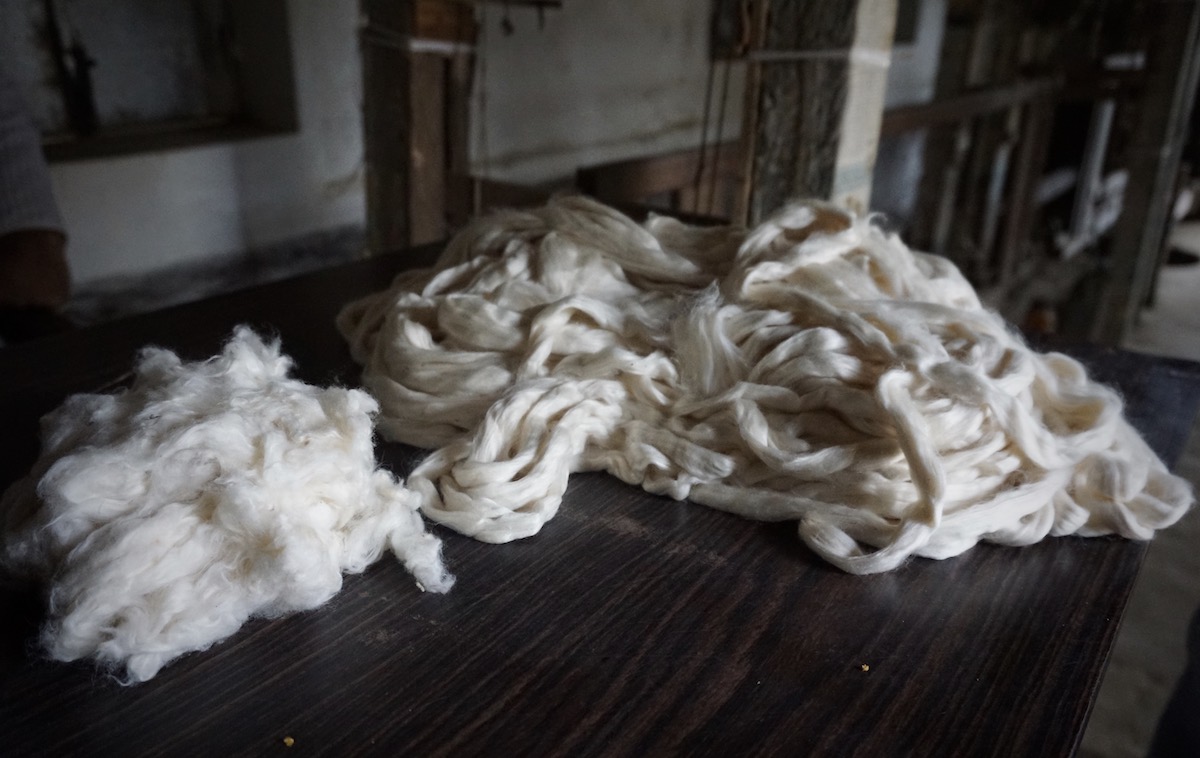
“Begin by identifying local cotton varieties. Propagate their seeds. Process cotton in the available methods, using small machines if hand spinning and handweaving aren’t available locally. Take small steps. Khadi will come in several years as awareness spreads. There is a movement, and if we support one another, we can create global change. While I don’t fly due to environmental reasons, I’m happy to be of help however I can be remotely.”
As he says this, I think of that day I’d first learned about Tula all those years ago, at the Janapada Seva Trust in Melkote, on their natural farm surrounded by coconut trees rustling in the wind, with melodic handweaving in the background. This movement, based on the intricate relationship between humanity and nature, forged through friendships with rural farmers and artisans, has tangibly changed cotton agriculture and khadi organizations throughout the country. On a personal level, I’d long been seeking to live more aligned with nature in the ways of my ancestors, outside of extractive modern-day commercial norms.[xxi] Tula has deeply changed me by showing that this is possible when a community comes together to co-create.
Harpreet Singh is founding an organization to enable sustainable living grounded in age-old indigenous practices. She’d love to hear from you! She can be reached at harpreet at hey dot com or www.linkedin.com/in/harpreetnc.
[i] Beckert, Sven. Empire of Cotton: A Global History. Pg 432.
https://india.blogs.nytimes.com/2012/10/16/in-india-gm-crops-come-at-a-high-price/
[ii] Beckert, Sven. Empire of Cotton: A Global History. Pg 7.
[iii] Beckert, Sven. Empire of Cotton: A Global History. Pg 326.
[iv] Beckert, Sven. Empire of Cotton: A Global History. Pg 326.
[v] The farmers were given a non-GM variety of hirsutum.
[vi] Beckert, Sven. Empire of Cotton: A Global History. Note that Monsanto’s genetically modified cotton is within the hirsutum variety.
[vii] Desi refers to indigenous South Asian strains of cotton. Desi literally means ‘from this land.’
[viii] Beckert, Sven. Empire of Cotton: A Global History. Pg 4.
[ix] Beckert, Sven. Empire of Cotton: A Global History. Pgs 15, 129, 296: “While in 1861 cotton was harvested on 629,000 acres of land in Berar, that acreage had nearly doubled by 1865, and then doubled once more by the 1880s. By the early twentieth century, Berar alone produced one-quarter of the Indian cotton harvest — a harvest larger than that of all of Egypt. As one observer put it, Berar had ‘become a perfect garden of cotton.’”
[x] Mansata, Bharat. “The Vision of Natural Farming,” page 197. Panchagavya is derived from cow products that “stimulate microbial growth and may thus be incorporated in preparing indigenous fertility-enhancing recipes. Farmers have different recipes, commonly adding varied plant materials to serve as a safe pest control measure.”
[xi] grown for the nutritious flax seeds, which are used in traditional Indian cuisine, not for linen fabric.
[xii] Gandhi, M. K. Hind Swaraj, and Other Writings. Edited by Anthony Parel. Pg 172.
[xiii]Beckert, Sven. Empire of Cotton: A Global History. Pg 16.
[xiv] Beckert, Sven. Empire of Cotton: A Global History. Pg 19.
[xv] Beckert, Sven. Empire of Cotton: A Global History. Pg 43.
[xvi] Beckert, Sven. Empire of Cotton: A Global History. Pg 45.
[xvii] Beckert, Sven. Empire of Cotton: A Global History. Pg 326.
[xviii] Beckert, Sven. Empire of Cotton: A Global History. Pg 329.
[xix] Beckert, Sven. Empire of Cotton: A Global History. Pg 75.
[xx] https://www.newsweek.com/2015/08/21/environmental-crisis-your-closet-362409.html
[xxi] Sven Beckert describes the origins of modern-day capitalism from European colonists who adopted extractive, exploitative means. As he writes on page 441:
Although our historical imaginations are usually dominated by cities, factories, and industrial workers, we have seen that much of the emergence of the modern world occurred in the countryside — by the often violent turning of rural people into the creators and consumers of commodities made or used elsewhere. This emphasis on the countryside allows for an equally important emphasis — the importance of coercion and violence to the history of capitalism. Slavery, colonialism, and forced labor, among other forms of violence, were not aberrations in the history of capitalism but were at its very core.
